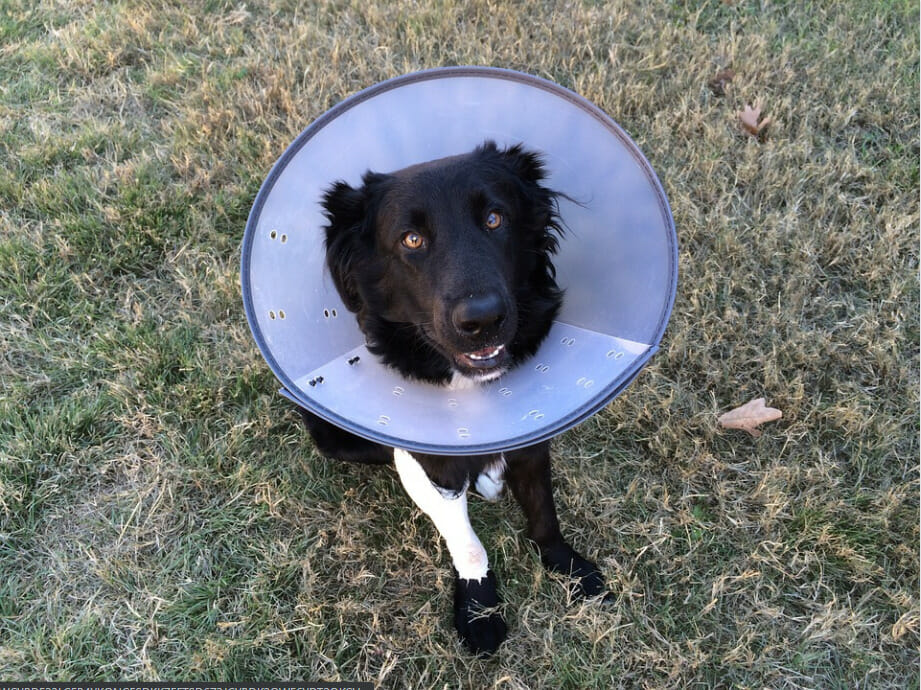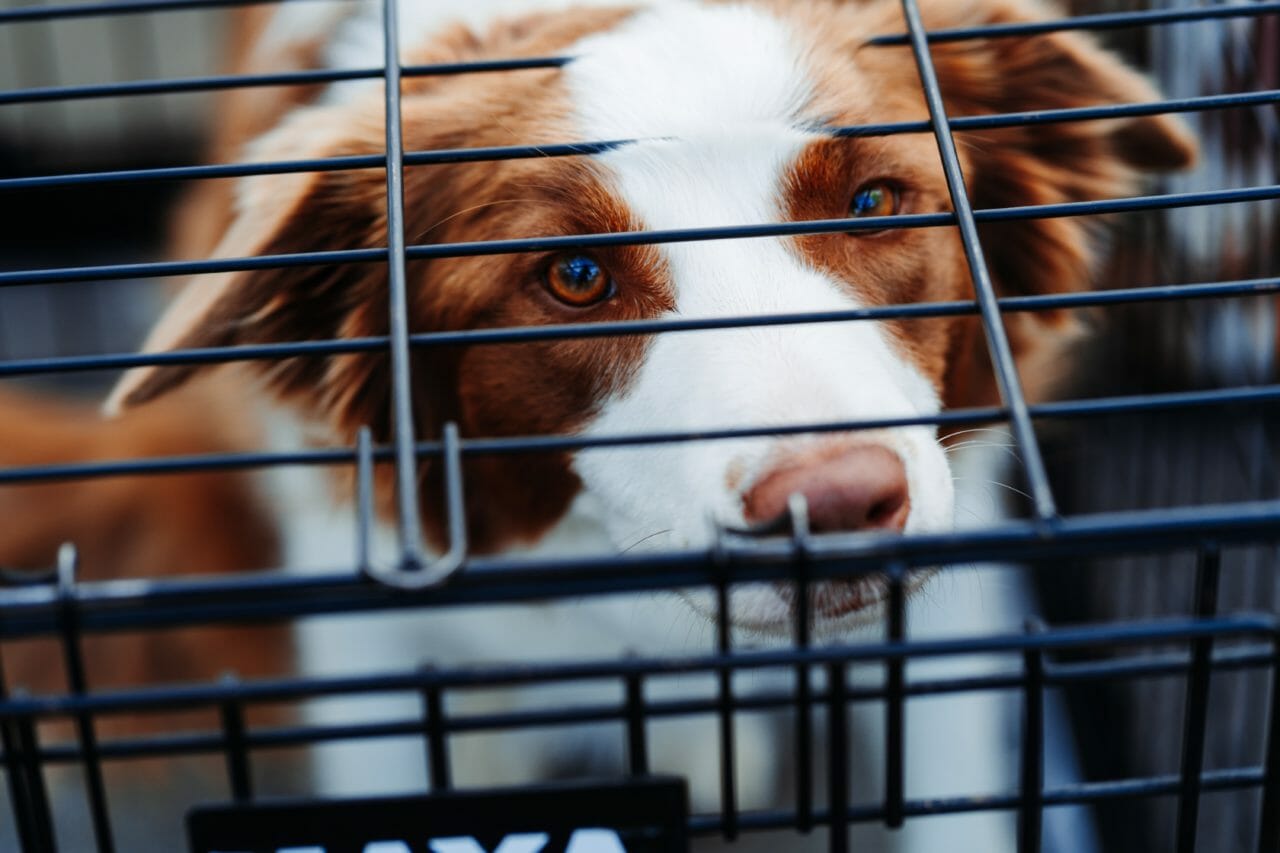Dogs grow very fast from puppies to adults, but do they have growing pains?
Just like people, dogs go through growth spurts. Going from a puppy to a full-grown dog can be a lot of work, and sometimes that growth comes with a few aches and pains.
So, yes, all dogs will go through your traditional growing pains and typically start to experience growing pains between the ages of 6 and 12. Some dogs may even experience something a little more intense called panosteitis. Panosteitis, or growing pains of the long bones, is a condition that can affect dogs of all ages, but is most commonly seen in young, large-breed dogs.
So, what exactly is panosteitis? RehabPet.com has put together this handy guide to help you spot the signs and symptoms of panosteitis in your dog and what you can do to help your pup feel better.
What Is Panosteitis?
Panosteitis is a condition that leads to inflammation of the long bones in a dog’s legs. It can affect any breed of dog, but is most commonly seen in large-breed puppies between the ages of 4 and 18 months.
Panosteitis can occur in more than one bone at a time and can move from one bone to another. The most common bones affected are the humerus (upper arm), radius (forearm), tibia (shinbone), and femur (thighbone).
When panosteitis sets in, it starts to cause shifting leg lameness. Leg lameness is when your dog favors one leg over another when walking or running. The lameness can come and go at first and may only last for a few days before it shifts to another leg.
As the condition progresses, the lameness may occur randomly. Your dog may start to limp or even refuse to put weight on an affected leg.

The most common dog breeds that see onset of panosteitis include:
- German Shepherds
- Great Danes
- Golden Retrievers
- Labrador Retrievers
- Rottweilers
- Doberman Pinschers
- Basset Hounds
What Causes Panosteitis?
The exact cause of panosteitis is unknown, but it’s thought to be linked to a combination of factors, including:
Stress
Stress on a dog’s bones during a growth spurt can possibly lead to the development of panosteitis.
Infection
Some researchers believe that an infection in the marrow of the long bones can cause panosteitis.
Genetics
There may be a genetic predisposition for some dogs to develop panosteitis. German Shepherds are most commonly affected by panosteitis.
Autoimmune Issues
It’s possible that an autoimmune disorder may be the underlying cause of panosteitis. An autoimmune disorder causes the body’s immune system to mistakenly attack and damage healthy tissue.
Poor Nutrition
A lack of certain nutrients in a dog’s diet can lead to the development of panosteitis.
The exact cause of this disease is still unknown, and more research needs to be done in order to better understand causes and treatments.

How to Spot Panosteitis in Your Dog
Now that you know a little more about panosteitis, let’s talk about how to spot it.
You read earlier that panosteitis typically bother dogs between the ages of four and eighteen months old. The first signs of panosteitis are usually shifting leg lameness and pain. The lameness will come and go at first and may only last for a few days before it moves to another leg.
Other symptoms can also give away that panosteitis is forming in your dog. These symptoms include:
- Tender spots near the affected area
- Fever
- Lethargy
- Loss of appetite
- Weight loss
At the onset of panosteitis, there may be ups and downs where symptoms seem to get worse and then improve. These cycles can last over the course of a month or two.
How Will My Vet Diagnose My Dog’s Panosteitis?
If you think that your dog may have panosteitis, the first step is to visit your vet.
Your vet will do a physical examination and ask you about your dog’s medical history and any symptoms they’ve been experiencing. It’s common for your vet to take x-rays in order to get a better look at the bones, so they can assess your dog’s bone density levels.
Keep in mind you may need to come back for multiple x-rays because panosteitis can take a week or more to show up after symptoms begin.
Once your vet has all the information, he or she will be able to give you an accurate diagnosis and create a treatment plan for your dog.
Treating Panosteitis in Dogs
The good news is that panosteitis is treatable, and most dogs make a full recovery.
Treatment typically involves relieving the pain with a few weeks of anti-inflammatory pain medication. Your vet may also recommend crate rest or limited activity during this time.
Here are some other ways you can help your dog recover faster:
Keep them warm
Dogs with panosteitis often feel better when they’re in a warm environment. You can do this by using a heating pad or placing them in a doggy sweater.
Feed them a high-quality diet
A nutritious diet will help your dog’s bones heal properly. Ask your vet for recommendations on which food is best for your dog.
Keep them calm
Dogs with panosteitis often do better when they’re calm and relaxed. This means avoiding strenuous activity and situations that may cause them stress.
Ensure they get their medication every day
It’s important to properly administer your pup’s medication as prescribed by the vet. This will help relieve their pain and promote healing.
Show them love
One of the best things you can do for your dog is to show them love and affection. This will help them feel better and ease their anxiety.
Closing Thoughts
We started with the question: Do dogs have growing pains? The answer is clearly yes.
Panosteitis will be the most common type of growing pain and can be a painful condition for your dog. However, because it’s treatable, most dogs make a full recovery.
As a pet owner, the best thing you can do is to be aware of the signs and symptoms of panosteitis and other conditions. This way you can get your dog the treatment they need as soon as possible.



